- Catherine
- September 19, 2023
- 2:30 am

FiberMall
Answered on 2:30 am
Optical transceivers such as OSFP (Octal Small Form Factor Pluggable) and QSFP-DD (Quad Small Form Factor Pluggable Double Density) are integral to significant high-speed, high-density networking applications in data centers and telecommunications. Dealing with new network speeds and managing bandwidth needs, different factors might lead to a preference for one over the other.
Before listing the pros and cons, it is important to note the crucial differences between them:
1. Form Factor: OSFP is larger than QSFP-DD, resulting in a lower port density. However, this larger size allows OSFP to handle higher wattage, providing better heat dissipation and therefore potentially higher bandwidth per port in the future.
2. Compatibility: QSFP-DD was designed with backward compatibility with QSFP28 in mind. You can use existing QSFP28 cables and modules in a QSFP-DD port.
Now, let’s discuss some of the pros and cons:
OSFP
Pros:
1. Higher Power Handling: OSFP can handle higher power up to 15W, accommodating future bandwidth needs. There is the potential to reach up to 800Gbps for future uses.
2. Thermal Efficiency: The larger form factor leads to better heat dissipation, which may become increasingly important as connections’ power utilization and density increase.
Cons:
1. Low Port Density: Due to their larger size, data center rack units fitted with OSFP ports have a lower overall port density compared to those using QSFP-DD.
2. No Backward Compatibility: OSFP is not backward compatible with existing form factors, which can complicate upgrades and increase costs.
QSFP-DD
Pros:
1. Backward Compatibility: QSFP-DD is backward compatible with QSFP, and QSFP28 modules. This allows for easier upgrading while lowering costs by reusing existing hardware.
2. High Port Density: The smaller QSFP-DD form factor allows for more ports on a single switch, leading to a more compact and dense arrangement which can save precious space in data centers.
Cons:
1. Lower Power Handling: QSFP-DD power handling is lower than OSFP, making it harder to scale for future increased transmission rates.
2. Thermal Concerns: Due to the high port density and higher power demand for future standards, managing thermal dissipation may become a challenge.
The choice between QSFP-DD and OSFP will depend on your specific circumstances and long-term network goals. If you have existing QSFP infrastructure and you’re seeking a high-density configuration with measured growth in mind, QSFP-DD is a solid choice. If, however, you’re preparing for immense growth and want to set up your data center for future advancements (especially those requiring high power and efficient thermal handling), OSFP could be the better choice.
People Also Ask
How to Use the XGSPON ONU Stick SFP+
Fiber-to-the-Home (FTTH) technology is revolutionizing internet connectivity. However, the closed devices provided by internet service providers often restrict users’ freedom. If you have a router or switch with an SFP+ interface, such as the Ubiquiti Dream Machine Pro, Mikrotik CCR series, or an OPNsense device, the XGSPON ONU Stick SFP+
The Ultimate Guide to Choosing a 5-Port Gigabit Ethernet Switch for Your Home Network
An efficient home network system is the foundation of contemporary technology, facilitating the smooth operation of activities such as streaming, gaming, and home offices. Gigabit Ethernet routers are an integral component of the home network system, and a five-port gigabit ethernet switch marks the initial stage of network enhancement. Smaller
Unlocking the Power of Enterprise Network Switches: Your Ultimate Guide
In the contemporary era characterized by rapid technological advancements, the infrastructure of an organization’s network is the foundation of any successful business. Efficient enterprise network switches are crucial for optimal productivity, full organizational communication, and meeting the needs of modern business functions. What are these switches and how can they
FiberMall Launches Liquid-Cooled Optical Modules and AOCs, Driving Green and Efficient Data Center Connectivity
FiberMall, a global leader in optical communication solutions, today officially announced the launch of multiple liquid-cooled optical modules and active optical cables (AOCs) spanning data rates from 10G to 200G. This new product lineup includes key models such as the 10G SFP+, 25G SFP28, 100G QSFP28, 200G SFP56, 400G QSFP112,
Understanding 10G-PON, XGS-PON, GPON, and 10G-EPON in Passive Optical Networks
In the context of modern telecommunications, Passive Optical Networks (PON) stand out as a noteworthy development since they allow businesses and residential users to connect to the internet faster and more reliably. Among the various standards which drive the PON technology, the 10G-PON, XGS-PON, GPON, and 10G-EPON are the most
Related Articles
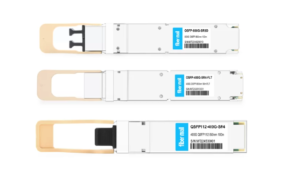
800G SR8 and 400G SR4 Optical Transceiver Modules Compatibility and Interconnection Test Report
Version Change Log Writer V0 Sample Test Cassie Test Purpose Test Objects:800G OSFP SR8/400G OSFP SR4/400G Q112 SR4. By conducting corresponding tests, the test parameters meet the relevant industry standards, and the test modules can be normally used for Nvidia (Mellanox) MQM9790 switch, Nvidia (Mellanox) ConnectX-7 network card and Nvidia (Mellanox) BlueField-3, laying a foundation for
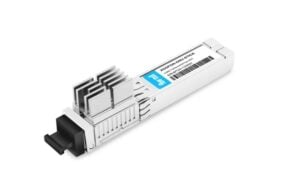
How to Use the XGSPON ONU Stick SFP+
Fiber-to-the-Home (FTTH) technology is revolutionizing internet connectivity. However, the closed devices provided by internet service providers often restrict users’ freedom. If you have a router or switch with an SFP+ interface, such as the Ubiquiti Dream Machine Pro, Mikrotik CCR series, or an OPNsense device, the XGSPON ONU Stick SFP+
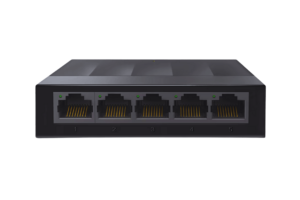
The Ultimate Guide to Choosing a 5-Port Gigabit Ethernet Switch for Your Home Network
An efficient home network system is the foundation of contemporary technology, facilitating the smooth operation of activities such as streaming, gaming, and home offices. Gigabit Ethernet routers are an integral component of the home network system, and a five-port gigabit ethernet switch marks the initial stage of network enhancement. Smaller
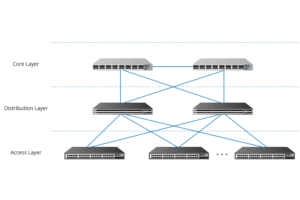
Unlocking the Power of Enterprise Network Switches: Your Ultimate Guide
In the contemporary era characterized by rapid technological advancements, the infrastructure of an organization’s network is the foundation of any successful business. Efficient enterprise network switches are crucial for optimal productivity, full organizational communication, and meeting the needs of modern business functions. What are these switches and how can they
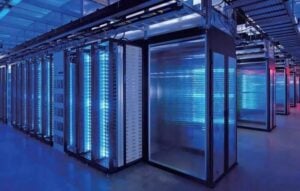
FiberMall Launches Liquid-Cooled Optical Modules and AOCs, Driving Green and Efficient Data Center Connectivity
FiberMall, a global leader in optical communication solutions, today officially announced the launch of multiple liquid-cooled optical modules and active optical cables (AOCs) spanning data rates from 10G to 200G. This new product lineup includes key models such as the 10G SFP+, 25G SFP28, 100G QSFP28, 200G SFP56, 400G QSFP112,
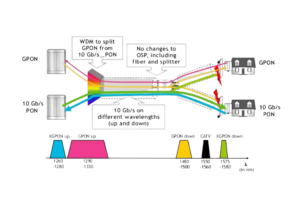
Understanding 10G-PON, XGS-PON, GPON, and 10G-EPON in Passive Optical Networks
In the context of modern telecommunications, Passive Optical Networks (PON) stand out as a noteworthy development since they allow businesses and residential users to connect to the internet faster and more reliably. Among the various standards which drive the PON technology, the 10G-PON, XGS-PON, GPON, and 10G-EPON are the most
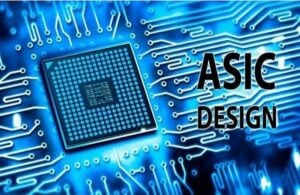
The Rise of ASIC Chips
DeepSeek has led to an explosion in demand for inference, and a hole has been torn in Nvidia’s “computing power hegemony”. The door to a new world has gradually opened—the computing power revolution led by ASIC chips is moving from silence to noise. Recently, Core Flow Think Tank quoted an
